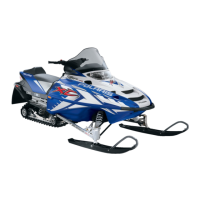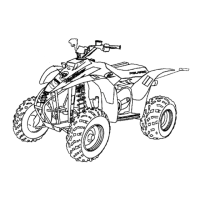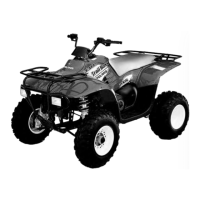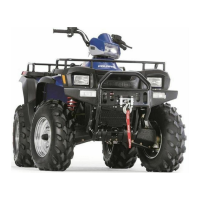10.6
FRONT SUSPENSION/STEERING
FRONT SUSPENSION ADJUSTMENT PROCEDURES
SET UP AND ADJUSTMENTS
Spring preload is one of the adjustment options which affects ride. Preload is the amount of pressure at which the spring is held.
The longer the installed length of the spring, the less the amount of pre-load; the shorter the installed length of the spring, the
more the amount of pre-load. An increase in IFS shock spring pre-load will result in an increase in ski pressure.
To adjust front spring preload on threaded adjust models, grasp the spring and turn in a clockwise direction (as viewed from the
bottom of the shock) to increase the preload. Turn in a counterclockwise direction to decrease preload.
In the adjacent illustration, high preload and low preload positions are depicted.
When adjusting, be sure springs on both the left and right sides of the machine are at the same adjustment.
For the best ride the spring preload should be as low as possible. Set the preload to use the full travel of the ski shock with
occasional light bottoming.
For the best ride the spring preload should be as low as possible. Set the preload to use the full travel of the ski shock with
occasional light bottoming. To determine if your machine is using full travel, push the shock jounce bumper down as far as it will
go on the shock rod and test ride the machine.
The bumper will move up on the rod in direct relation to the amount of travel. For example, if the shock travel is full, the bumper
will be seated at the top of the shock.
Remove the existing spring and install the next highest rate spring, or Reduce the preload on the existing spring and change the
shock valving to obtain the desired effect.
NOTE: Shock valving can only be adjusted or changed on models that can be serviced.
CAUTION
If the plastic nut is unscrewed from the threaded body
the nut will break. Always leave one thread showing
above the plastic nut or the spring coils will stack, re-
sulting in damage.
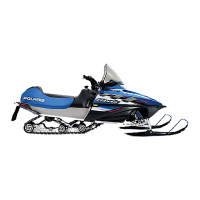
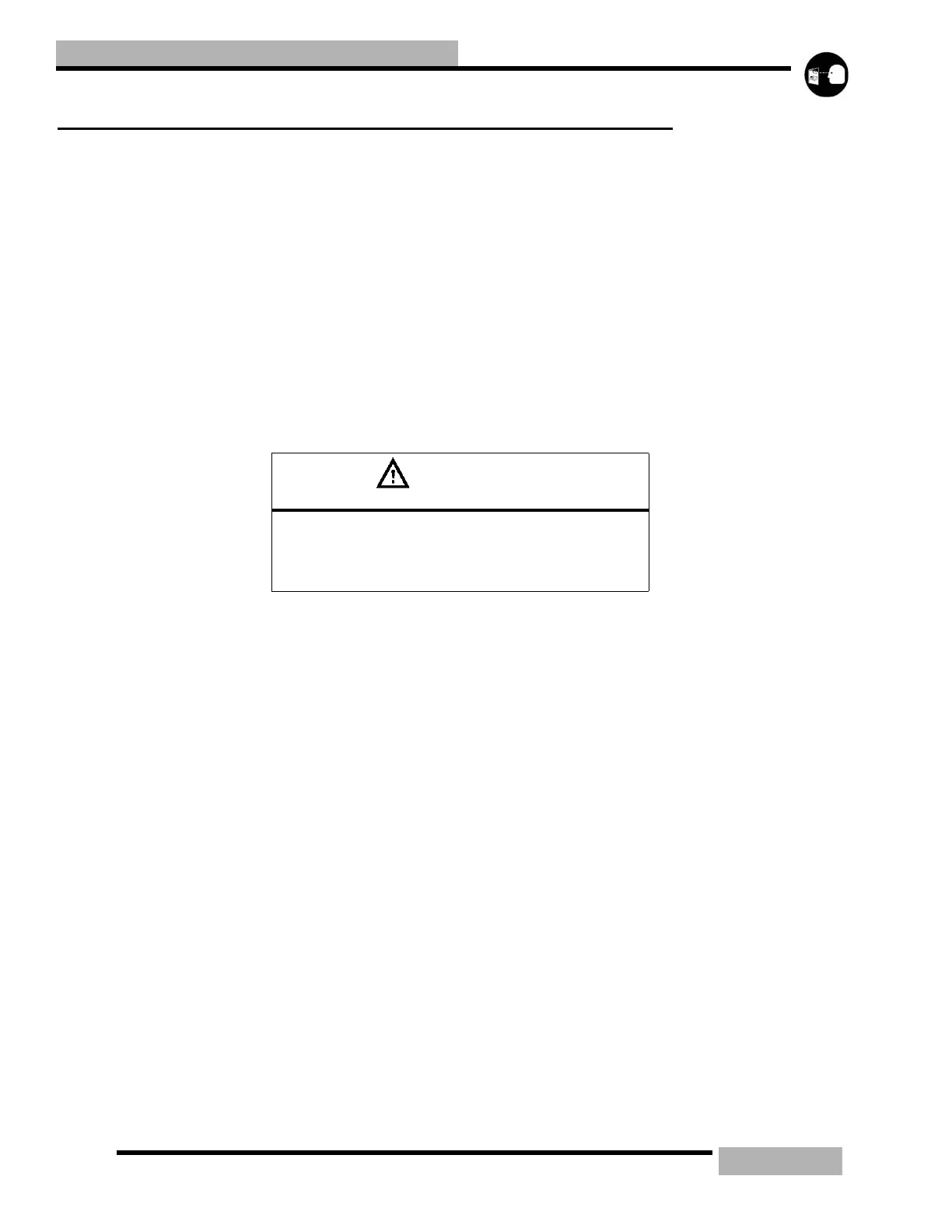